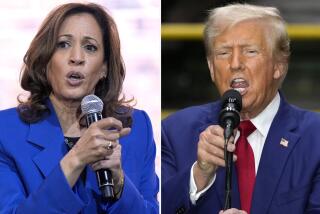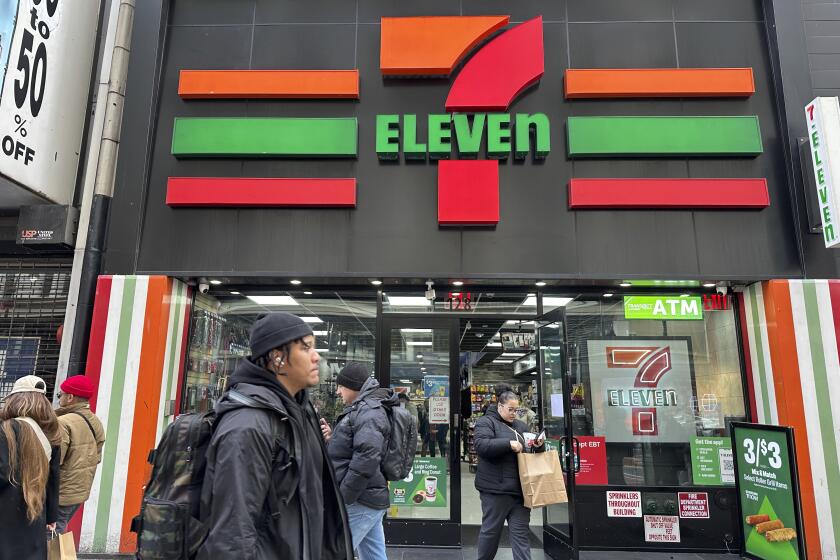Column: Bucking pay-TV trend, Disney offers quality programming at a fair price
The Happiest Place on Earth isn’t a theme park. It’s your TV.
Or it soon will be.
After decades of pay-TV companies gouging subscribers with bloated, high-priced programming packages, consumers are finally being offered the content they want at a reasonable cost — courtesy of Walt Disney Co.
There was never any question that Disney would be able to serve up quality fare when it announced plans last year for a streaming service. The company has its own stable of content, as well as Pixar, Marvel, “Star Wars” and other top-tier brands.
What’s surprising — pleasantly so — is that Disney has chosen not to wring as much money as possible from viewers. Rather, it’s taken the revolutionary approach that if you price something fairly, you’ll get a lot of customers.
Its stand-alone Disney+ service, debuting in November, will cost just $6.99 a month — less than half the cost of HBO. It will feature all the expected goodies: princesses, superheroes, Jedi knights, the works.
And this week it was announced that for just $12.99, you’ll be able to get a bundle that includes Disney+, ESPN+ and Hulu.
Clearly someone at the Mouse House asked how they could offer something that would appeal to every member of the family. This bundle does that.
The real breakthrough is combining Disney and Hulu content with ESPN. If there’s a single complaint I’ve heard from consumers who wanted to cut the cable cord, it’s that they wanted access to sports.
ESPN+ says it offers “hundreds of MLB, NHL and MLS games, Grand Slam tennis, Top Rank boxing, PGA Tour golf, college sports, international rugby, cricket” and “the full library of ESPN Films.”
That’s not going to please everyone. If you’re the sort of person who needs to watch every game in every sport — let alone some hoops — you’ll likely still have to subscribe to a traditional cable or satellite service.
But it’s a big step toward meeting the needs of a significant segment of the viewing audience.
Count Newport Beach resident Gail Kalscheur, 67, as being among pay-TV subscribers who are very interested in what Disney has to offer.
“We certainly need sports,” she told me. “My husband is a big fan. At $12.99 — yes, we’d do that.”
I wrote on Tuesday about the rough-and-tough approach AT&T is taking to its pay-TV offerings.
AT&T pulled HBO and Cinemax from Dish Network and Sling TV last November because those services won’t pay AT&T enough.
At the same time, AT&T blacked out CBS channels on its own DirecTV and U-verse services last month because CBS wanted too much money from AT&T.
AT&T’s upcoming HBO Max is expected to be more expensive than all rival streaming services, perhaps costing as much as $18 a month.
That’s the old-school, make-as-much-as-you-can-as-fast-as-you-can business model.
Disney, on the other hand, seems to be borrowing from the Amazon playbook — offer the best possible service at the lowest possible price and crush competitors over time by dominating the market.
Disney Chief Executive Bob Iger said on the company’s earnings call this week that the idea was simple: offer consumers “tremendous volume, tremendous quality and tremendous variety — for a good price.”
A Disney spokeswoman declined to elaborate, except to emphasize that Iger and the company take the streaming market very seriously.
Disney’s approach is exceptional not just because it’s the opposite of how they run their theme parks, which seem to get pricier every year, but because it’s a strategy that completely undercuts the traditional pay-TV ploy of offering tons of unwanted content at too high a price.
According to Leichtman Research Group, the average cable or satellite TV subscriber now pays more than $100 a month for services that can include dozens if not hundreds of unwanted channels.
The typical TV viewer watches only about 17 channels on a regular basis, says Nielsen.
Sierra Madre resident David Beach, 69, says he shells out $275 monthly for his DirecTV plan, which includes every channel available.
He told me he and his wife watch maybe 15 of the hundreds of channels they pay for — mostly TCM, for the classic films.
“If we could find a streaming service we like, we’d cut the cord,” Beach said.
I told him he could stream TCM and dozens of other channels via Sling TV for $30 a month. In response, Beach said the days of his $275 monthly bill may be numbered.
Don’t forget: Cutting the cord means having high-speed internet access. If you don’t already have it (and you probably do), that’ll add $60 or so to monthly costs.
Market researcher eMarketer reported this week that, by December, the number of cord-cutting households is expected to surge by 19% to just over 40 million.
By 2023, the firm predicts, there will be about 56 million households that have cut the cord, compared with 73 million that still have cable or satellite service.
If Disney’s streaming services are as appealing as most analysts expect, it’s likely the pace of cord cutting will accelerate, especially among families keen on the sort of content Disney excels at.
This is bad news for cable companies. And it’s bad news as well for Netflix, which likely has the most to lose from such a powerful new competitor.
Needham analyst Laura Martin told clients the other day that because many consumers are reluctant to subscribe to more than three streaming services, many will feel they have to choose between Netflix and Disney.
“We project Disney will win (and Netflix lose),” she said.
My sense is that with a resource-rich player like Disney splashing in the pool, and with the company laser-focused on competitive pricing, everyone else is going to have to adjust accordingly.
Think of that. Quality pay-TV at affordable prices.
And you didn’t even have to wish upon a star.
More to Read
Inside the business of entertainment
The Wide Shot brings you news, analysis and insights on everything from streaming wars to production — and what it all means for the future.
You may occasionally receive promotional content from the Los Angeles Times.











